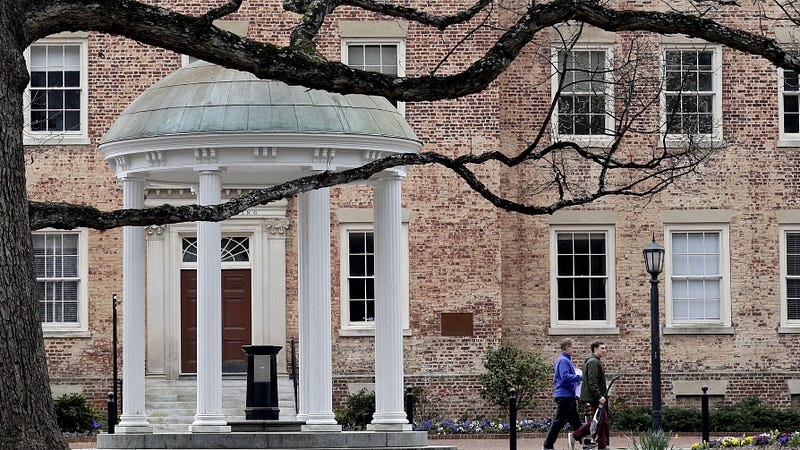
A number of schools, including UNC-Chapel Hill (above), have had to move from in-person to remote learning after COVID-19 outbreaks. Photo courtesy of USA Today
COVID-19 has percolated everyone’s news feeds in the past 10 months since the disease broke out in December, 2019. Back then, Americans only made memes about it, imagining a post-apocalyptic world if it were ever to spread here. Yet the virus did eventually make its way to the States and turned our fears into reality. COVID has taken the lives of nearly 900,000 people, almost 200,000 of which were American, resulting in mass graves worldwide due to the startling rate at which people have died. The post-apocalyptic world that these memes envisioned is real — and it not only includes a pandemic, but also a spread of awareness regarding police brutality and systemic racism against people of color, especially black Americans. More of us are realizing how corrupt the U.S. government truly is and learning how to use the legal system to file unemployment claims. Our lives have changed in drastic ways, changing the world we knew before March. That being said, COVID is far from over. Even though there is a vaccine in the process of making, cases continue to soar all over the world — especially now as colleges, universities, and schools are in the process of opening.
Although Hamilton is one of few colleges in the United States and the only New England Small College Athletic Conference (NESCAC) member to have zero cases of COVID (woot woot!), as of Aug. 9, many other schools have hosted clusters of cases, even being forced to take action because of them. According to “Shutdown, repeat” by Colleen Flaherty of
Inside Higher Ed
, of the 954 students tested by the University of North Carolina-Chapel Hill (UNC), between Aug. 10 and Aug. 16, 130 tested positive, resulting in a 13.6 percent positive rate (up from 2.8 percent in the prior week). As a response, UNC Officials quickly decided to switch to remote learning. Some people attribute the lack of safety regulations within dormitories to this significant rise in cases at UNC, and although this belief is partly true, frequent sorority rush parties within the Greek system off-campus actually fostered most of the outbreak. According to CBS 17, the Chapel Hill Police Department reported a large increase of emergency phone calls by students concerned about the lack of social distancing and other preventative behaviors present at parties.
James Madison University (JMU) in Virginia also reversed their in-person education plan at which over 1000 cases were reported, according to Ian Munro of the
Daily-News Record
. JMU did not test their students before letting them onto campus, unlike Hamilton, and was unable to successfully regulate parties and enforce social distancing. The University has placed 113 students under investigation with possible suspension or expulsion as consequences for facilitating the outbreak..
Hamilton students, for the most part, are maintaining social distance, wearing masks and actively meeting the safety standards designed to keep us safe, which have likely contributed to the absence of cases on campus. However, there are a few bad apples in this amazing batch. The College has already given first warnings to students who have violated the community standards, even sending two students home for more egregious acts .
I want to make myself clear when I say that throwing parties, not wearing masks, and disobeying social distance protocols are not cool things to do. The people who do so might think that they live above the rules, but lives are at stake here. These students cannot knowingly put peers, professors and staff members’ lives at risk simply because of the desire for short-term fun. Hamilton has already taken a risk by letting students live here and is willing to take a step forward and even turn things back to normal, but in time and only if rules are followed. Fellow Hamiltonians, be safe, remain obedient, and remember the risks that come with impatience and immaturity.